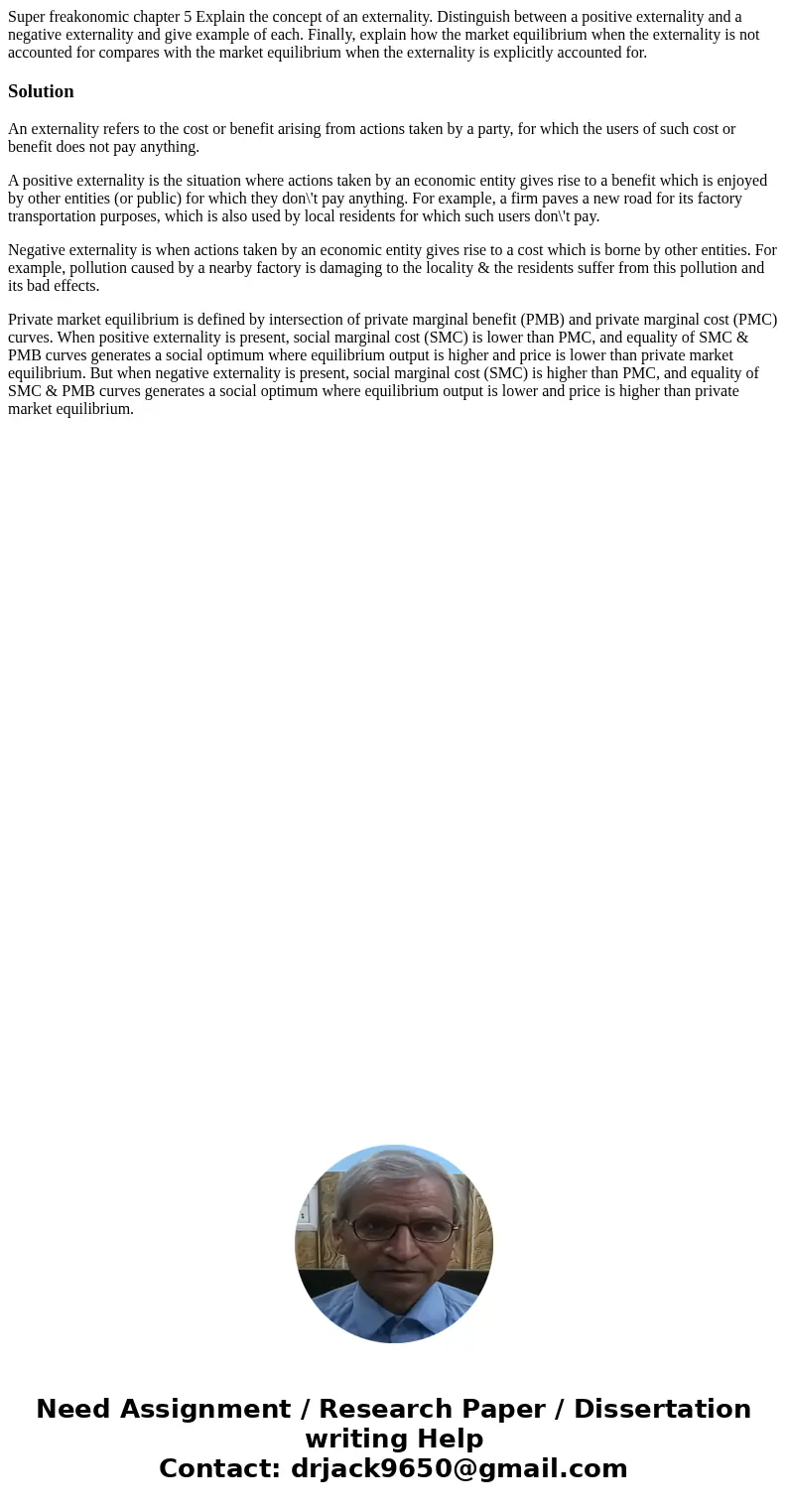Super freakonomic chapter 5 Explain the concept of an extern
Super freakonomic chapter 5 Explain the concept of an externality. Distinguish between a positive externality and a negative externality and give example of each. Finally, explain how the market equilibrium when the externality is not accounted for compares with the market equilibrium when the externality is explicitly accounted for.
Solution
An externality refers to the cost or benefit arising from actions taken by a party, for which the users of such cost or benefit does not pay anything.
A positive externality is the situation where actions taken by an economic entity gives rise to a benefit which is enjoyed by other entities (or public) for which they don\'t pay anything. For example, a firm paves a new road for its factory transportation purposes, which is also used by local residents for which such users don\'t pay.
Negative externality is when actions taken by an economic entity gives rise to a cost which is borne by other entities. For example, pollution caused by a nearby factory is damaging to the locality & the residents suffer from this pollution and its bad effects.
Private market equilibrium is defined by intersection of private marginal benefit (PMB) and private marginal cost (PMC) curves. When positive externality is present, social marginal cost (SMC) is lower than PMC, and equality of SMC & PMB curves generates a social optimum where equilibrium output is higher and price is lower than private market equilibrium. But when negative externality is present, social marginal cost (SMC) is higher than PMC, and equality of SMC & PMB curves generates a social optimum where equilibrium output is lower and price is higher than private market equilibrium.

 Homework Sourse
Homework Sourse